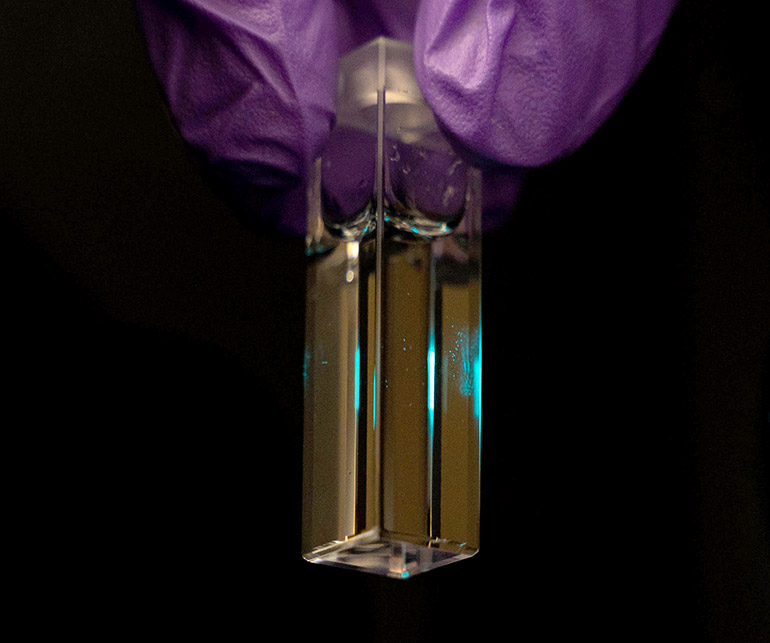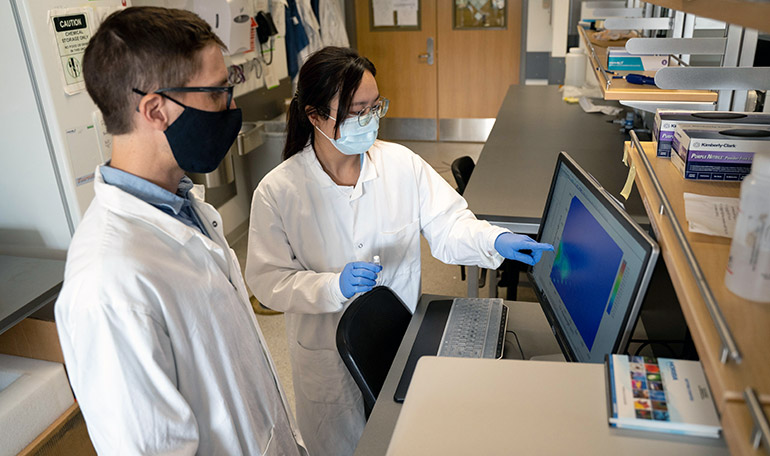Category: Portfolio
Here is my portfolio
Test post 2

Multiple stressors impact those living in small, rural communities
A team of researchers with British Columbia’s three interior universities are reaching out to residents in small communities to see how they are coping. The project is being conducted with faculty at UBC Okanagan, Thompson Rivers University and the University of Northern British Columbia. UBCO School of Nursing Professor Dr. Nelly Oelke explains why those in the smaller towns need support more than ever before.
Can you explain why researchers are concerned about people’s mental health?
Globally, we are in the midst of three overlapping crises: the COVID-19 pandemic, racism and climate change. The toxic drug crisis in BC has worsened as well. Research has shown that climate change events, such as wildfires and flooding, negatively influence both the physical and mental health of those impacted. And it’s well known that public health measures, such as self-isolation, combined with social and physical distancing, have resulted in social isolation, fear, financial challenges, and public uncertainty. As a result, mental health and substance-use issues — including anxiety, depression, increased substance use and overdose — have surged.
People imagine life in a small, rural BC town as less stressful than city life. But you’re saying the opposite might be true.
Rural communities are unequally affected by both the pandemic and climate change, and when these factors occur together the impact on individual and community mental health and well-being is markedly increased. Given these multiple crises that are affecting rural communities, it is important to enhance individual and community resilience.
You’re looking at three specific communities in your research. Why these three?
Our research focuses on three rural communities: Ashcroft, Burns Lake and Keremeos, although our survey is open to all rural residents in the province. Each of these communities has been impacted significantly over the last three years by one or more climate change events — including wildfires and severe flooding. While dealing with this, they have also had to deal with the challenges caused by the pandemic.
What sort of information are you looking for?
To better understand these impacts on community members, we are conducting a survey for those aged 15 years and over who live, work, or go to school in one of the three communities.
We will also be conducting community consultations and interviews in each community to better understand the residents’ needs and experiences during times like these.
People completing the survey can also share photos, stories, drawings, poems or other forms of expression to elaborate on their experiences with climate change events and COVID-19.
Once all responses have been collected and analyzed, we will conduct discussion sessions in each community to co-create solutions for resiliency in each of the communities.
What’s the next step?
This research will produce important findings about the impacts of the pandemic and climate change events on mental health in rural communities. Further, the solutions we develop with the survey respondents will promote resiliency and assist with the challenges they are facing and will continue to face moving forward. We hope that the information gathered in this study, as well as the benefits it may bring, will reach all rural communities in BC and beyond.
Can residents in other communities participate? How can they get involved?
While we have identified three different communities, our survey is open to all rural residents in BC over the age of 15 years. If people are interested in participating or want to gather more information about the study, they can contact Nelly Oelke at nelly.oelke@ubc.ca, Bonnie Fournier at bofournier@tru.ca, or Davina Banner-Lukaris at Davina.Banner-Lukaris@unbc.ca.
To complete the survey visit: ubc.ca1.qualtrics.com/jfe/form/SV_etFlMuUCZXjSklL
To submit photos, stories or other forms of expressions and answer survey questions visit: ubc.ca1.qualtrics.com/jfe/form/SV_7O1HwR1vH8so0Id
About UBC’s Okanagan campus
UBC’s Okanagan campus is an innovative hub for research and learning founded in 2005 in partnership with local Indigenous peoples, the Syilx Okanagan Nation, in whose territory the campus resides. As part of UBC—ranked among the world’s top 20 public universities—the Okanagan campus combines a globally recognized UBC education with a tight-knit and entrepreneurial community that welcomes students and faculty from around the world in British Columbia’s stunning Okanagan Valley.
To find out more, visit: ok.ubc.ca
Test post 1

Fluorescence lighting helps detect impurities in water
Shining a beam of light into potentially contaminated water samples may hold the key to real-time detection of hydrocarbons and pesticides in water.
UBC Okanagan researchers are testing the use of fluorescence to monitor water quality. The results, they say, show great promise.
When a beam of light is shone into the water, it excites the electrons in molecules of certain compounds and causes them to emit light. The characteristics of the emitted light are like a fingerprint and can be used to identify certain contaminants, explains Nicolas Peleato, an assistant professor at UBCO’s School of Engineering.
“The challenge with using this fluorescence approach is that they are typically source-specific; meaning we have to calibrate for a particular water source and anticipate what specific contaminants we want to look for,” says Peleato. “In our latest work, we have developed a data processing technique that expands the effectiveness from one water source to others.”
This means their new technique removes a lot of the guesswork at the beginning of the process. As Peleato points out, every water source has a slightly different composition of organic compounds, which can hide the contaminant signals, so calibrating for each source is crucial for detection accuracy.
Using machine learning algorithms, Peleato and his graduate student Ziyu Li have devised an approach that addresses the challenge of source-specific models through mapping their similarities.
According to Li, it isn’t quite a one-size-fits-all method but it is close.
“By establishing a process that identifies similar patterns between water sources, the fluorescence detection becomes a viable option for real-time, accurate detection of hydrocarbons and pesticides,” explains Li.
During the testing process, the researchers look for unique shapes of fluorescence signals. Each unique shape indicates the presence of impurities and helps researchers determine what the impurity is and distinguish it from other compounds.
Water contaminated with hydrocarbons is known to be carcinogenic and can be dangerous, or toxic, to flora and fauna.
The researchers are now turning their attention to using this new approach to detect and monitor chemicals, such as the major toxic contaminants in oil sand tailings ponds that may impact surface water and groundwater.
“Building a comprehensive model that seamlessly transitions from one water source to another will speed up monitoring, and has the potential to be a game changer,” says Peleato.
This work was published in the journal Chemosphere, and funded in part by the Natural Sciences and Engineering Research Council of Canada.

About UBC’s Okanagan campus
UBC’s Okanagan campus is an innovative hub for research and learning founded in 2005 in partnership with local Indigenous peoples, the Syilx Okanagan Nation, in whose territory the campus resides. As part of UBC—ranked among the world’s top 20 public universities—the Okanagan campus combines a globally recognized UBC education with a tight-knit and entrepreneurial community that welcomes students and faculty from around the world in British Columbia’s stunning Okanagan Valley.
To find out more, visit: ok.ubc.ca
Test Link
blob:blob://https://www.instagram.com/2e0689b5-2398-46c6-8e24-5d683391e0a2
https://www.instagram.com/2e0689b5-2398-46c6-8e24-5d683391e0a2
About UBC’s Okanagan campus
UBC’s Okanagan campus is an innovative hub for research and learning founded in 2005 in partnership with local Indigenous peoples, the Syilx Okanagan Nation, in whose territory the campus resides. As part of UBC—ranked among the world’s top 20 public universities—the Okanagan campus combines a globally recognized UBC education with a tight-knit and entrepreneurial community that welcomes students and faculty from around the world in British Columbia’s stunning Okanagan Valley.
To find out more, visit: ok.ubc.ca